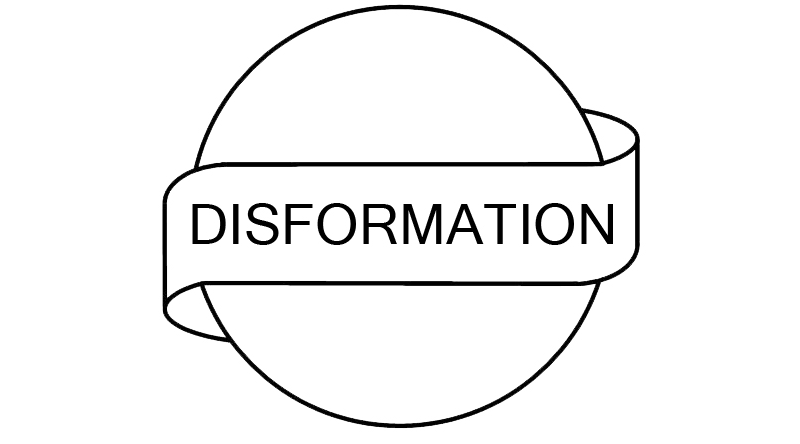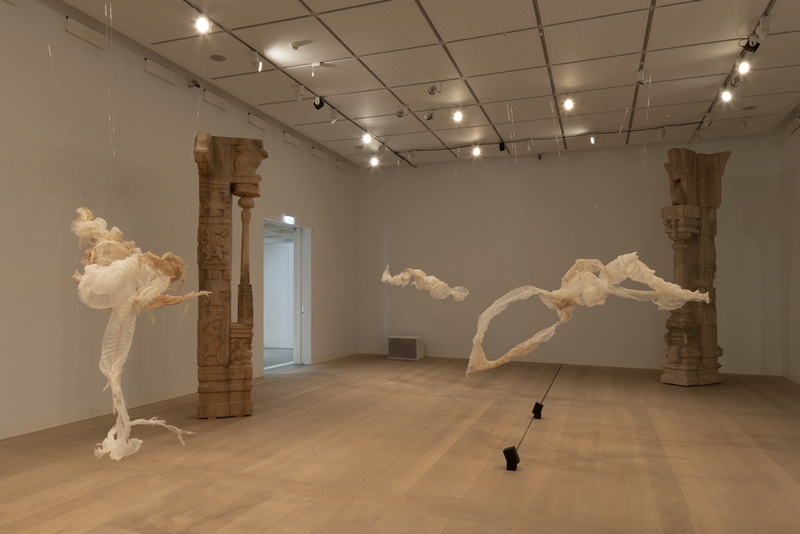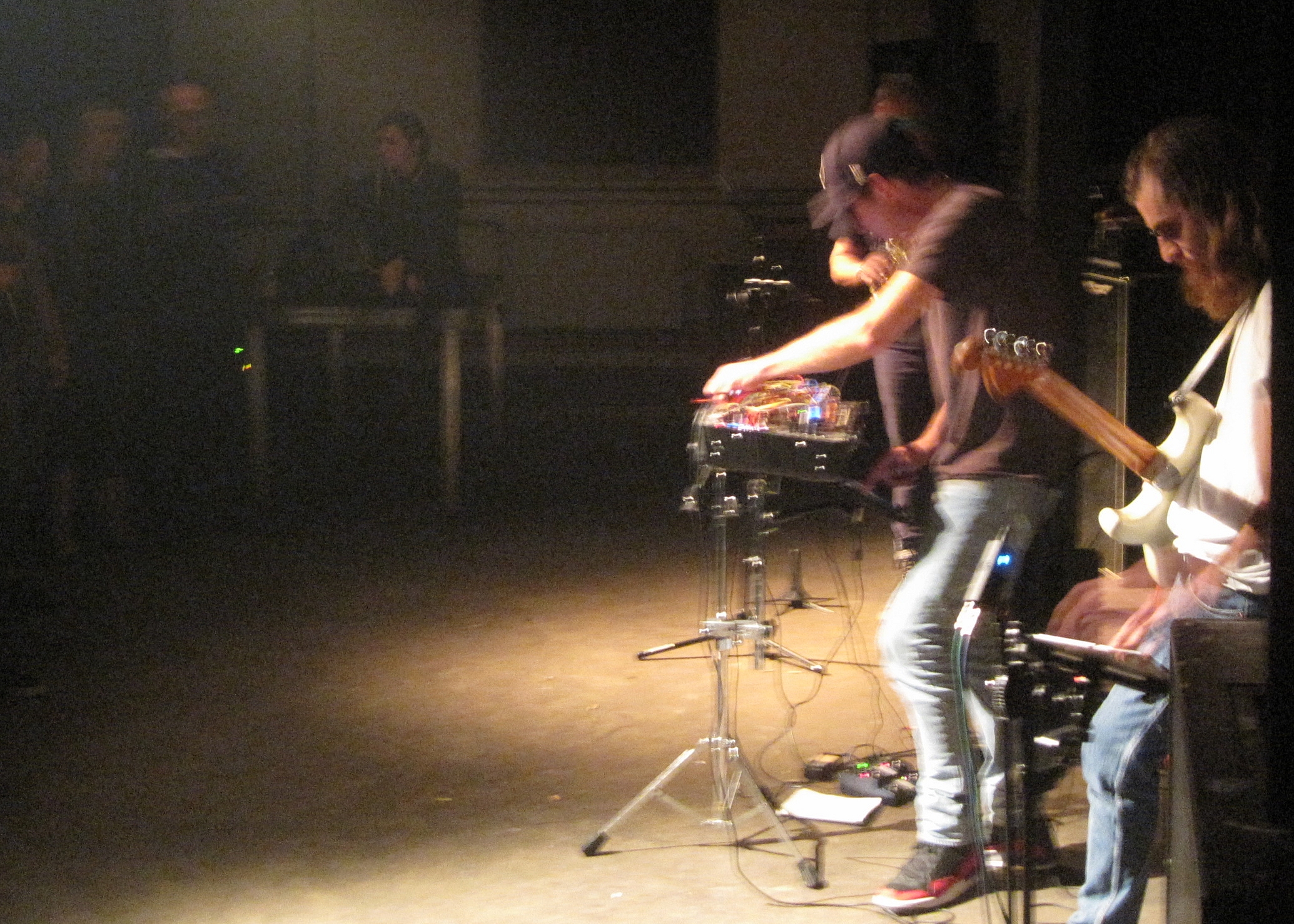Disformation – Liberating music from all kinds of context (interview)

By Wieland Rambke
How do you create a space without a context? This question lies at the heart of new-founded experimental music label Disformation, conceived by Casper Gottlieb and Jesper Bagger Hviid of Copenhagen-based noise act GOHV. In its output, the label seeks to release music that pits itself against the very notion of context: Disformation rejects the creation of narratives as a whole.
For the listener, every attempt at being able to personally relate to the label’s output is denied in favour of releases that seek to isolate music as much as possible from any associative frame. What remains is music that is as blatant as it is abject. Music that is simultaneously cloaked and in-your-face.
But how do you create a space with no boundaries, without any points of reference? What remains when the backgrounds disappear?
The founders of Disformation are addressing this question by establishing the label as a pure network that consists only of nodes and connections. This network has no center. Disformation touches the very essence of the concept of relations and dependencies, seeking to abandon the gravitational force of personal accessibility. The heart of the label is not a set of aesthetics, the heart of the label is an idea: The idea that the music should stand for itself.
And this notion is present in every grain of the label’s work, from titles and formats to aesthetical choices. Such as the label logo, which is set in a font that is even too discrete to be called bland. It is impossible to read
anything from or into this logo. It communicates nothing but itself, and it denies any form of personal access. This disconnection is further continued in the strict regime regarding the titles of the releases. When an artist is to release on the label, they are provided with a list of computergenerated anagrams provided by Gottlieb and Hviid, the label’s operators. All these titles are anagrams of the word Disformation. The artist is then to pick a title from the list, which will become the definitive title for the release.
Take as an example Guy Birkin‘s “A Fids Monitor”, part of the second batch of the label’s releases. This album is a collection of sonifications of geophysical and economic data sets. For this release, the UK unemployment rate and the development of greenhouse gasses, among others, have been converted into MIDI files, which then were played back on various synthesizers. The musical result is as dazzling and dizzying as any large data set. We are reminded of how confusing data ultimately is to humans.
But do not mistake “A Fids Monitor” for something that seeks to clarify or illustrate data. There is no educative drive present in this release: Data appears here as an invisible substance which can be traced and shown in different forms without ever truly revealing itself. Data can shift between forms, but it has no true form of its own.
Thankfully, Guy Birkin does not succumb to the on-going trend of data visualisations that spreads the rumour of an inherent beauty of data. This logical fallacy is left to people like David McCandless, author of the book “Information is beautiful”: The problem with David McCandless’ approach of visualising data is that he defeats his own pretence. By applying lush and visually pleasing shapes and colours, he disguises the nature of data instead of revealing it.
No, David, information is not beautiful. Only your beautiful shapes and colours are beautiful. It doesn’t matter which data set we take: If we apply nice looking ways for illustrating data, cancer death rates are just as nice as the number of flowers bought on every year on Valentine’s day between 1997 and 2017. Data is not beautiful, it is inherently nihilistic.
Consequently, Guy Birkin has turned his data sets into loony noncompositions of zero elegance, high-lighting the intangibility and the elusive nature of data. Data is always disconnected from what it seeks to clarify.
Today, data is everywhere. It has become part of our environment. By using data as a source for creating music, Guy Birkin is creating a modern form of musique concrète. This further removes the human element from the role of the composer. The composer becomes a mechanic, who is occupied with combinations and configurations rather than with creations. There is no personal fingerprint visible in this release. This serves the label’s purpose well, as Disformation is not occupied with documenting anything.
Instead, Disformation establishes a network of releases, all of which are on par. There will be no flagship artists on the label, and the removal of all personal involvement or readability extends to the label’s founders: They expressly reject releasing their own music on it.
During an interview, Gottlieb and Hviid seemed more like ambassadors than owners, relating the reasons and reasoning behind the label in purely logical terms, as self-evident facts.
They uphold that the label could well continue without their part-taking. Because of its highly formalized and depersonalized approach, there is no need for their personal involvement. With the human element absent, the label is a system set in motion and is working on its own terms now. Gottlieb and Hviid describe their work for the label as follows: “The only decisions we are making is who to contact. Every other decision has already been made.”
As the label is sternly based on ideas, these ideas can also be picked up and enforced by other operators. Ideas are no property, they can wander and replicate themselves. They have a life of their own.
These ideas form the DNA of Disformation. And just as is the case with DNA, and the concurrence of phenotype and genotype, every release is an instance of the same basic set of properties. Just as every human is as alike as they are different, the releases on Disformation are highly diverse, while adhering to the same underlying principles.
The concept of DNA is echoed in the format of the releases on Disformation: Every release on the label is composed as a triptych. While the music itself comes in digital form, it is accompanied by a print of a unique moiré-pattern, which is held in a 7”- sleeve. This print gives no more information than the logo of the label, together with imagery that has been picked by the artist. A PDF featuring a text chosen by the artist finalizes the release.
This triangular format, consisting of music, text, and image on equal level, enforces and encourages an understanding of each release as a fixed set, the elements of which are always variable. Every release can only be understood fully when the recipient is aware of, and familiar with, all three elements together. Thus, a release on Disformation reaches the recipient on three levels simultaneously: As a sonic experience, as playful interaction with the moiré-foil, and as a text that unfolds itself on the cerebral plan. These elements do not accompany each other: They form a triangle of equal balances. The texts are not liner notes, just as the imagery is not artwork. Instead, the elements constitute different expressions of the same underlying idea. A release is „played“ by putting on the music, interacting with the moiré-foil, and reading the text. The recipient decides which of the elements, or combinations of them, they engage with.
A common element of the musical pieces on these releases is that they are claiming space like an uninvited guest: They occupy your room, leaving no other option but to give in. They demand your attention without ever asking for it, and they don’t complement anything but themselves. An example of this is TR Kirstein’s forthcoming release, “Daimon Fortis”.
“Daimon Fortis” unfolds as a drone piece that is meandering slowly around itself. Time is vanishing and is blurred out completely. Listening through this release is a highly rewarding experience. Deep square waves are being modulated almost unperceivably into the sonic product of a machine meditating. This confronts us with how passive and relentless machines are. They enforce their own rhythms on us, simply because they are not as flexible as we are. And it is our flexibility which allows us to be overtaken. We cannot communicate with a machine: They do not provide any response or reaction. Consequently, this requires us to adapt, in an act of reverse ergonomics. Machines have become the circumstances under which we change.
As a contrast, consider the contribution of Calum Gunn, entitled “A Domino First”. A fitting title for the label’s first release. “A Domino First” sounds like a construct based on an archaeological excavation: It is as if an algorithm were to try to teach itself how to make Gabba out of the fragments it could find. All titles on the release point to the thrust and enthusiasm of 90s rave culture:
”START THE PARTY!!!”
”REWIND!!!”
”ONLY FOR THE HARDCORE!!!”
Both celebrating and lampooning the drug-driven overdrive of Gabba, the release offers tongue-in-cheek humour paired with a high will for abstraction. The classic Hoover sound, one of the building blocks of Gabba, and endlessly regurgitated within the genre, only pops up once on this release to take the piss out of its own over-use. It is discarded again right away.
This highly diverse set of releases, focused on inhuman music, shows a label forming a network of nodes, firing off information in all directions at once. Which is only right: There is no scene for this music.
Consequently, it has no insignia or gathering places, no spacial connections or boundaries. Within the harsh and often abject nature of these releases, an inhuman substance is at work. But this substance, indifferent to human considerations or emotions, is still palpable with our thoughts and emotions. The human element is only removed from the music, but not from the listener. Operating along the lines of this dichotomy, these releases provide unique experiences for the human listener. And who else could be the recipient of inhuman music?



